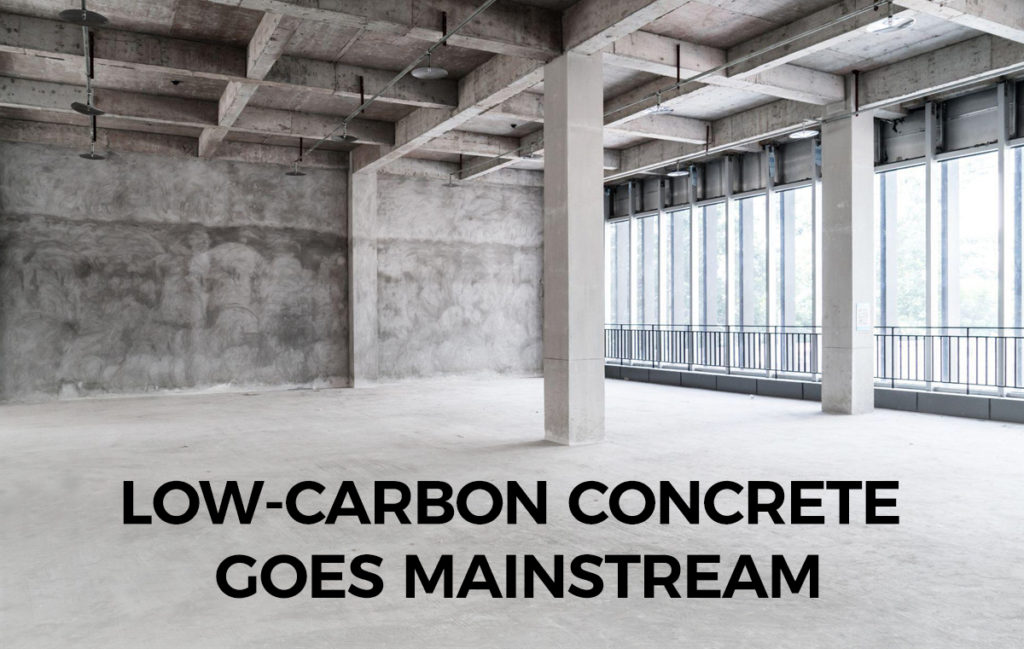New requirement on low-carbon concrete for Government of Canada projects + new industry guideline on specifying low-carbon concrete from Concrete Ontario
Government of Canada Projects Now Subject to “Standard on Embodied Carbon in Construction”
Canada’s federal government has long been “committed to” low-carbon construction. In 2023, the rubber hits the road.
The Government of Canada has released its long-awaited Standard on Embodied Carbon in Construction. This standard sets minimum requirements for the procurement of design and construction services to disclose and reduce the embodied carbon of major construction projects including the renovation or new construction of buildings or engineering assets.
The objective of this standard is to establish requirements to disclose and reduce the embodied carbon footprint of construction projects in accordance with the commitments in the Greening Government Strategy.
This standard is applicable to construction by all 22 federal departments (including the Department of Finance, Department of Health, Department of Justice, Department of Transport, etc), divisions/branches of federal public administration, of which there are over 50 (including Canadian Space Agency, Canadian Security Intelligence Service, Library and Archives Canada), and other federal bodies.
Key features of this new policy:
- Takes effect on December 31, 2022. Procurement commencing after this date is required to apply the standard.
- Currently applies to new construction or renovation of real property projects >$10M. It will extend to all projects >$5M in 2025.
- Currently covers one material: concrete. Additional materials are expected to be added in the future.
- The minimum project quantity is 100 m3 of concrete in total on the project. If less concrete is used, the policy doesn’t apply.
- Projects must disclose the embodied carbon footprint measured in global warming potential (GWP) with Environmental Product Declarations (EPDs).
- Type II EPDs conforming to ISO 14021:2016 and ISO 21930:2017 may be used to substantiate the global warming potential (GWP) of materials used in a project if the Type II EPDs provide higher resolution than the available Type III EPDs and if the Type II EPDs were created using an independently verified tool.
- If EPDs are not available, an LCA report that complies with ISO 14044, 14025, 21930, or equivalent, and has been verified by an LCA reviewer is acceptable.
- The Standard does not apply to projects in the Yukon, Nunavut, and the Northwest Territories as there are limited low-carbon concrete options in those locations.
10% Reduction Required
The policy also requires the total project’s GWP from concrete to be at least 10% below the ‘baseline’ calculated based on the Regional Industry Average Environmental Product Declaration (EPD) for the strength class and volume of each mix placed.
Interestingly, the reduction requirement does not apply “if the required performance of a structural material hinders the implementation of the [reduction requirement] or if a material is not available in a given region.”
Where a specialized concrete mix is required for high early strength, high or ultra-high performance, or cold-weather application, the benchmark GWP used for that mix shall be 130% of the baseline mix in the Regional Industry Average EPD for that strength class.
Concrete Ontario Releases Guideline for Specifying Low Carbon Ready Mixed Concrete in Ontario
This new guide builds on the recent release of Canada’s first set of regionally specific environmental product declarations (EPDs) for concrete. The guide, which was developed by and for the concrete industry, clearly explains the following:
- the different types of EPDs on the market
- how to specify low-carbon concrete
- how to calculate a project-specific “concrete carbon project budget”
- how to track your actual concrete-related embodied carbon and compare it against the budgeted amount
Developers, building owners, designers, and construction teams now have the tools they need to manage embodied carbon of concrete in a thoughtful and consistent manner.
Mantle Can Help
Does the new Federal Standard on Embodied Carbon in Construction apply to you, or are you an industry leader committed to best-in-class design and construction techniques, including low-carbon construction? Mantle can help ensure your next project is a climate leader. Reach out so we can co-create your climate solution.

